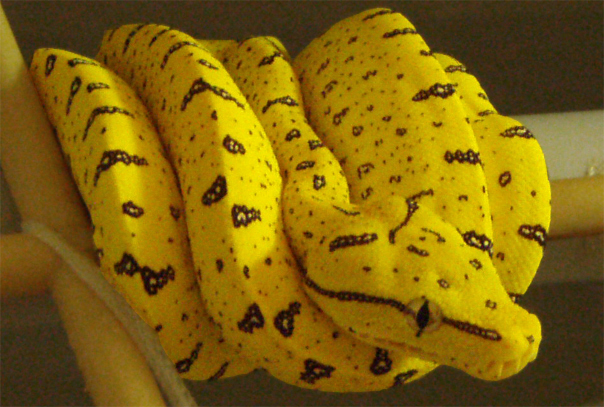Soldiers, and certainly civilians that can be be helped in the medical engineering sector, may one day get artificial implants with minimal abrasion, inspired by biology, or armor with all kinds of neat mechanical properties.
Over the last 150 Million years so, snakes have evolved a way to ease the stress on their bodies due to constant friction forces incurred in their legless locomotion; their skin. Regardless of where snakes are found, the skin is stiff and hard on the outside and becomes soft and flexible towards the inside. Since they climb trees and burrow themselves under ground, the skin has to be durable enough to persist until molting takes place, every few months.
Ph.D. student Marie-Christin Klein and Professor Stanislav Gorb of Kiel University examined the skin of four snake species, sand boa (Gongylophis colubrinus), the king snake (Lampropeltis getula californiae), the rainbow boa (Epicrates cenchria cenchria) and the green tree python (Morelia viridis), which inhabit different environments, from the desert to tropical trees.

Gongylophis colubrinus Copyright: CAU, photo: Marie Klein-Christin Klein
“With the help of these four species we found out that the skin architecture differs depending on habitat. However, all show a gradient in material properties. This means that the skin of all species has a stiff and hard outside and becomes more flexible and soft towards the inside, even though the skin differs in thickness and structure depending on species”, explained Klein , who said the findings confirm their assumption that the skin of snakes is optimized against abrasion wear.
The four snake species achieve this mechanical effect by developing different cell types. One species has a relatively thick skin with round cells, while the other has a relatively thin skin with elongated cells. “This speaks for a functional adaptation to legless locomotion, which has developed for snakes in both moist and dry habitats,” said Klein. “The general composition of snake skin is known, however, but no one has by now examined the impact of this on the mechanical material properties. A material that has a transition from a stiff outside to a flexible inside can distribute an impacting force over a larger area, therefore decreasing the force on one single point. Materials like this are like a flexible amour.”
Military and artificial implants are obvious applications but the propulsion and conveyer technique market could profit from the abrasion minimization findings, since lubrication would be needed less often.
Citation: Marie-Christin G. Klein and Stanislav N. Gorb , “Epidermis architecture and material properties of the skin of four snake species," J. R. Soc. Interface, published ahead of print August 15, 2012, 1742-5662 doi: 10.1098/rsif.2012.0479






Comments